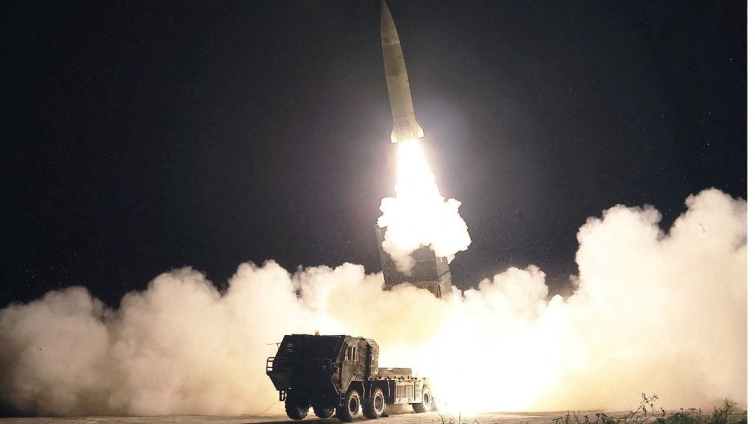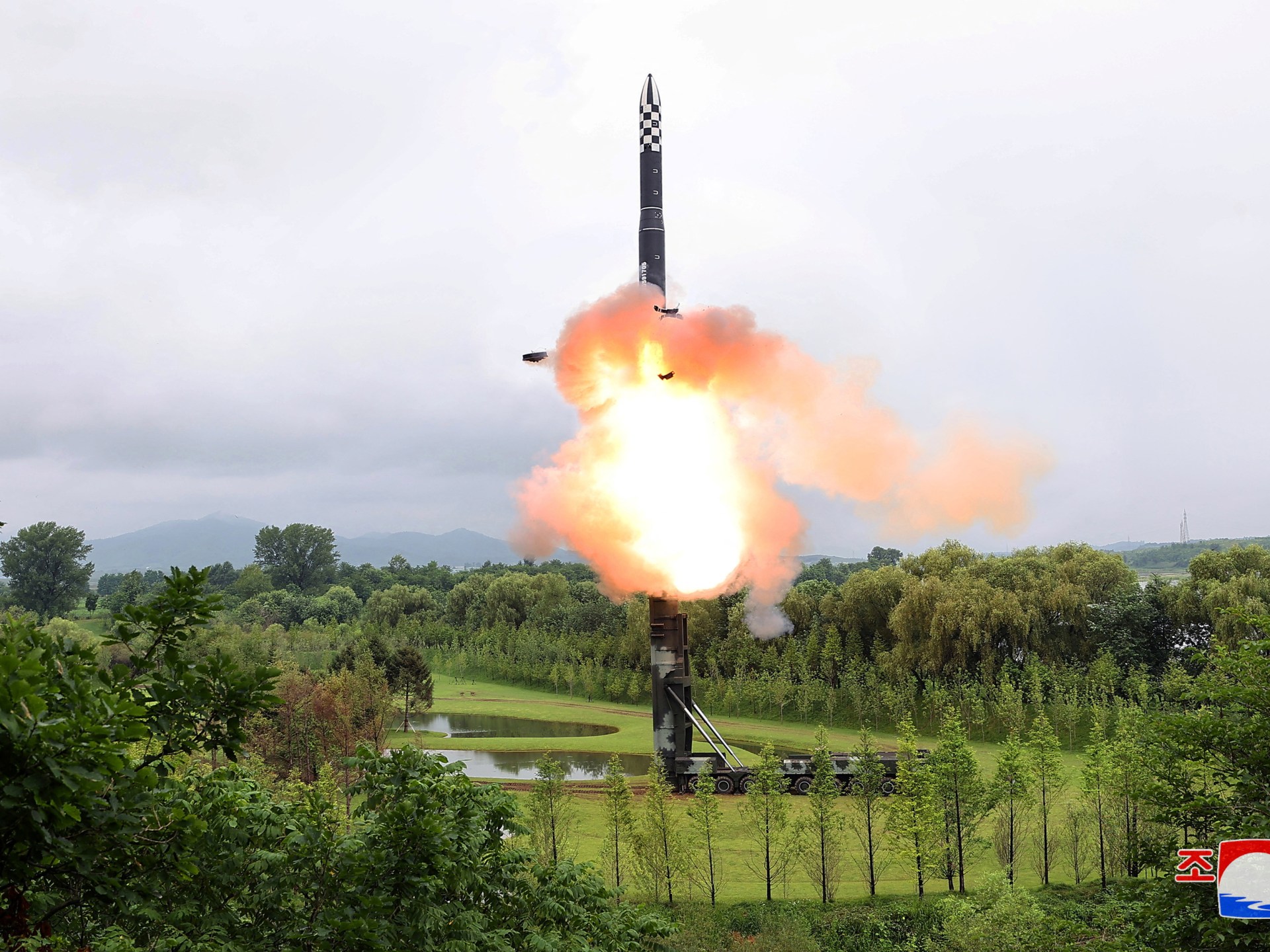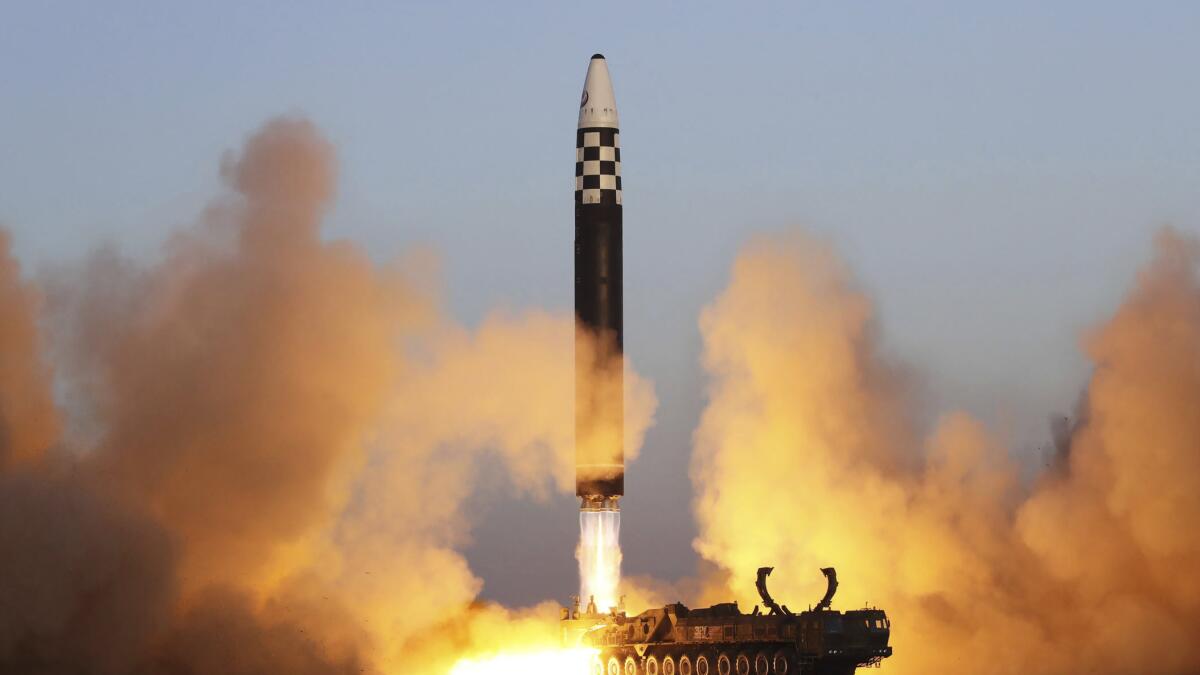North Korea’s Warning: Simulated Nuclear Missile Attack Raises Concerns of Escalating Tensions

North Korea’s Warning: Simulated Nuclear Missile Attack Raises Concerns of Escalating Tensions
In a provocative display of military prowess, North Korea declared on Sunday that it had conducted a simulated nuclear missile attack as a stark warning to the United States. This dramatic development has left the international community on edge, with concerns mounting over the potential for escalating tensions on the Korean peninsula.
According to the state-run Korean Central News Agency (KCNA), the simulated tactical nuclear attack drill took place successfully on Saturday. The exercise notably featured the launch of two long-range cruise missiles, each armed with mock nuclear warheads. These missiles were fired towards the West Sea of the Korean peninsula, covering a distance of 1,500 kilometers (approximately 930 miles) while maintaining a preset altitude of 150 meters.
North Korea’s bellicose actions are nothing new, but the explicit simulation of a nuclear missile attack serves as a stark reminder of the regime’s willingness to flex its military muscle. Pyongyang has long maintained a stance of military deterrence against perceived threats, especially from the United States and South Korea.
South Korea’s military, however, has cast doubts on the extent of North Korea’s success in this recent drill. Seoul’s Yonhap News reported that a senior official at the Joint Chiefs of Staff cautioned against taking North Korea’s claims at face value, suggesting that “not all of them succeeded.”
The timing of this simulated attack is particularly noteworthy. It comes amid ongoing diplomatic efforts to denuclearize North Korea and reduce tensions in the region. The recent visit by South Korean President Moon Jae-in to the United States and the Biden administration’s commitment to a “practical, calibrated approach” to North Korea have raised hopes of progress in resolving one of the world’s most enduring conflicts.
North Korean leader Kim Jong Un, however, seems intent on sending a clear message that his regime remains resolute in the face of external pressure. In addition to the simulated attack, Kim Jong Un made appearances at key industrial facilities, including the Pukjung Machine Complex, which produces marine engines, and a munitions factory. These visits underscore his emphasis on strengthening North Korea’s naval capabilities.
The international community, including the United States and South Korea, must tread carefully in the wake of North Korea’s provocative actions. While it is crucial to maintain diplomatic channels and explore opportunities for dialogue, it is equally important to address the security concerns posed by North Korea’s ongoing missile tests and nuclear ambitions.
The simulated nuclear missile attack serves as a stark reminder of the unpredictable nature of the North Korean regime. It is essential to analyze this development from multiple angles to fully understand its implications and potential consequences.

Historical Context: North Korea’s Pursuit of Nuclear Weapons
North Korea’s quest for nuclear weapons has been a long-standing source of concern for the international community. The regime’s nuclear ambitions date back to the early 1990s when it first embarked on a path toward developing a nuclear arsenal. Despite international efforts, including negotiations and sanctions, North Korea conducted its first nuclear test in 2006, marking a significant escalation in the crisis.
Subsequent years witnessed a series of nuclear tests, missile launches, and provocative rhetoric from North Korea, which heightened tensions on the Korean peninsula and beyond. The regime consistently argued that its nuclear weapons program was a necessary deterrent against perceived threats from the United States and its allies.
These actions led to a cycle of diplomatic engagement and tension escalation. The international community, particularly through the Six-Party Talks involving North Korea, South Korea, China, Japan, Russia, and the United States, sought to find a peaceful resolution to the crisis. However, progress remained elusive, and the talks ultimately stalled.
In recent years, North Korea has continued its missile tests, including the development of intercontinental ballistic missiles (ICBMs) capable of reaching the United States. These advancements raised alarms worldwide and prompted renewed efforts to engage with North Korea diplomatically.
Diplomatic Efforts and Regional Dynamics
The Trump administration made significant efforts to engage North Korea in diplomacy, with President Donald Trump holding unprecedented summits with Kim Jong Un in Singapore (2018) and Hanoi (2019). While these meetings garnered international attention, they failed to produce concrete results in terms of denuclearization.
The Biden administration has taken a more measured approach, emphasizing a “practical, calibrated approach” to North Korea. This approach aims to build on the groundwork laid by previous administrations while recognizing the complexity of the issue. It seeks to engage North Korea diplomatically while simultaneously addressing the regime’s provocative actions.
South Korea, under President Moon Jae-in, has played a pivotal role in facilitating dialogue between North Korea and the United States. The inter-Korean relationship is essential to any progress in resolving the nuclear issue, given the long-standing division of the Korean peninsula.
China and Russia, as regional powers and participants in the Six-Party Talks, continue to advocate for a peaceful solution to the North Korean nuclear crisis. Their involvement in diplomatic efforts remains crucial, as they have the potential to exert influence on Pyongyang.

The Significance of Simulated Nuclear Missile Attack
Against this backdrop of diplomatic efforts and regional dynamics, North Korea’s simulated nuclear missile attack carries several significant implications:
1. Deterrence Message: By conducting this simulated attack, North Korea seeks to reinforce its image as a formidable military power capable of defending itself. This message is intended to deter external intervention and strengthen the regime’s negotiating position.
2. Asserting Independence: The timing of the simulated attack suggests that North Korea is keen on asserting its independence and sovereignty. It is a signal that Pyongyang will not be easily swayed by external pressure, even as diplomatic channels remain open.
3. Domestic and International Audience: The regime’s actions are meant to resonate not only with the international community but also with its domestic audience. Kim Jong Un is consolidating his leadership by demonstrating his commitment to North Korea’s military capabilities.
4. Testing Regional Responses: North Korea’s provocative actions also serve to gauge the responses of its neighbors and key stakeholders. It is a way of assessing the unity and resolve of countries in the region and their commitment to addressing the North Korean issue.
5. Implications for Diplomacy: The simulated attack complicates ongoing diplomatic efforts. It adds an element of unpredictability to negotiations and could potentially lead to a hardening of positions on all sides, making progress in diplomatic talks more challenging.
International Response and the Path Forward
The international community faces a complex challenge in responding to North Korea’s provocative actions. A measured and coordinated response is essential to avoid further escalation while maintaining diplomatic momentum.
1. Dialogue and Engagement: Diplomatic channels must remain open, and engagement with North Korea should continue. The Biden administration’s approach of “practical, calibrated” diplomacy is a step in the right direction, focusing on achievable goals and a step-by-step process.
2. Sanctions and Pressure: International sanctions against North Korea should be rigorously enforced. These sanctions have proven effective in curbing the regime’s access to resources for its nuclear and missile programs. At the same time, efforts should be made to avoid humanitarian consequences for the North Korean population.
3. Regional Cooperation: South Korea, China, Japan, and Russia should work in tandem with the United States to find a collective approach to address North Korea’s nuclear ambitions. Coordination among these regional actors is crucial for achieving a peaceful resolution.
4. Clear Communication: Clear and consistent communication with North Korea is essential. A shared understanding of expectations and objectives is fundamental to successful diplomacy.
5. Long-Term Vision: Diplomatic efforts should be framed within a long-term vision for the Korean peninsula. This vision should include not only denuclearization but also the pursuit of peace, reconciliation, and eventual reunification, with the involvement of all relevant stakeholders.
North Korea’s simulated nuclear missile attack has raised alarm bells, but it should not derail ongoing diplomatic efforts. The path to peace on the Korean peninsula remains challenging, but it is not insurmountable. The international community must remain committed to pursuing a peaceful resolution to one of the world’s most pressing security concerns.




